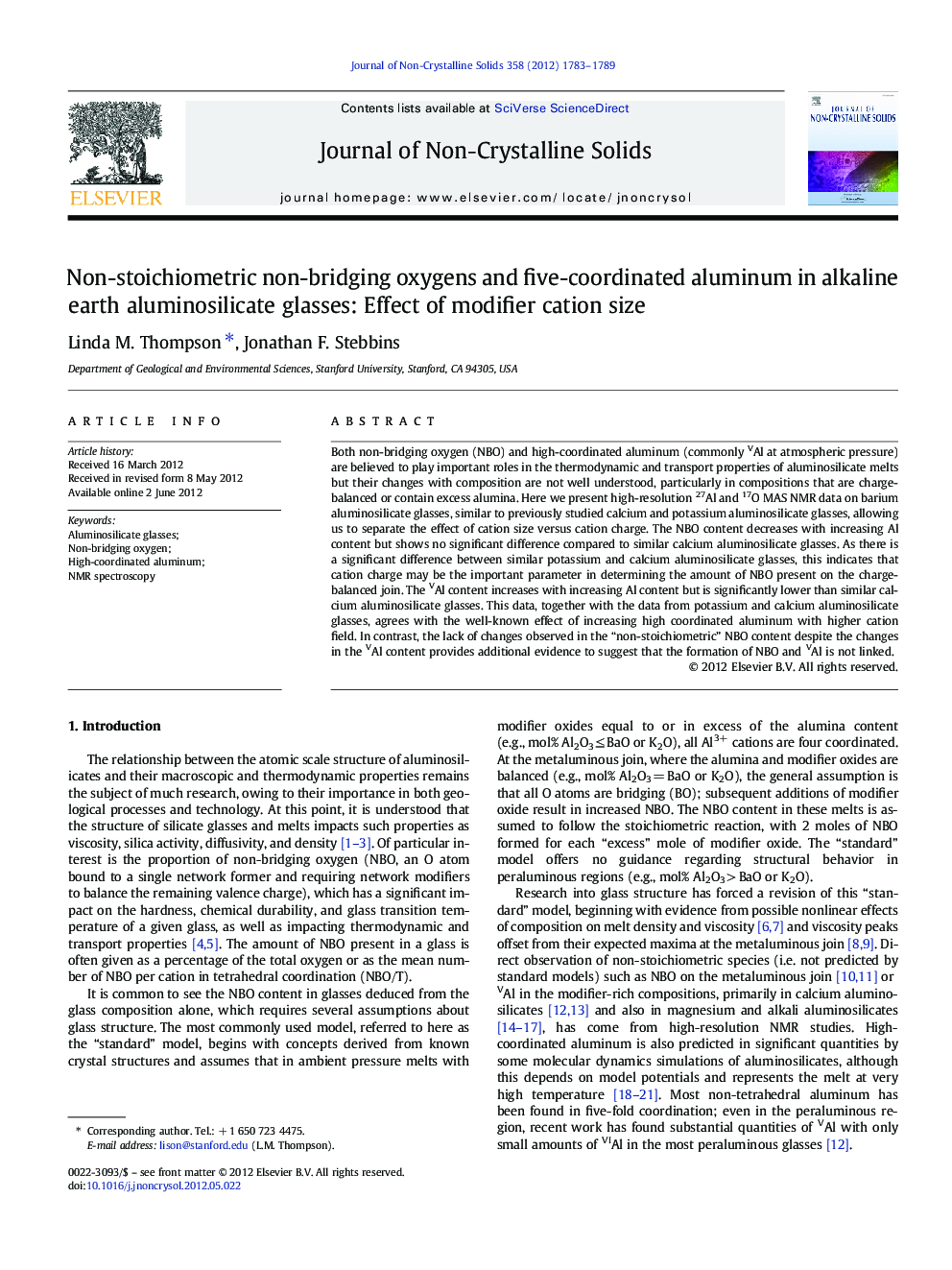| Article ID | Journal | Published Year | Pages | File Type |
|---|---|---|---|---|
| 1481544 | Journal of Non-Crystalline Solids | 2012 | 7 Pages |
Both non-bridging oxygen (NBO) and high-coordinated aluminum (commonly VAl at atmospheric pressure) are believed to play important roles in the thermodynamic and transport properties of aluminosilicate melts but their changes with composition are not well understood, particularly in compositions that are charge-balanced or contain excess alumina. Here we present high-resolution 27Al and 17O MAS NMR data on barium aluminosilicate glasses, similar to previously studied calcium and potassium aluminosilicate glasses, allowing us to separate the effect of cation size versus cation charge. The NBO content decreases with increasing Al content but shows no significant difference compared to similar calcium aluminosilicate glasses. As there is a significant difference between similar potassium and calcium aluminosilicate glasses, this indicates that cation charge may be the important parameter in determining the amount of NBO present on the charge-balanced join. The VAl content increases with increasing Al content but is significantly lower than similar calcium aluminosilicate glasses. This data, together with the data from potassium and calcium aluminosilicate glasses, agrees with the well-known effect of increasing high coordinated aluminum with higher cation field. In contrast, the lack of changes observed in the “non-stoichiometric” NBO content despite the changes in the VAl content provides additional evidence to suggest that the formation of NBO and VAl is not linked.
► Barium aluminosilicate glasses are synthesized near the charge-balanced join. ► NMR shows the presence of both non-bridging oxygen and VAl in all glasses. ► We observe no change in non-bridging oxygen compared to similar calcium glasses. ► The VAl content decreases compared to similar calcium glasses.
